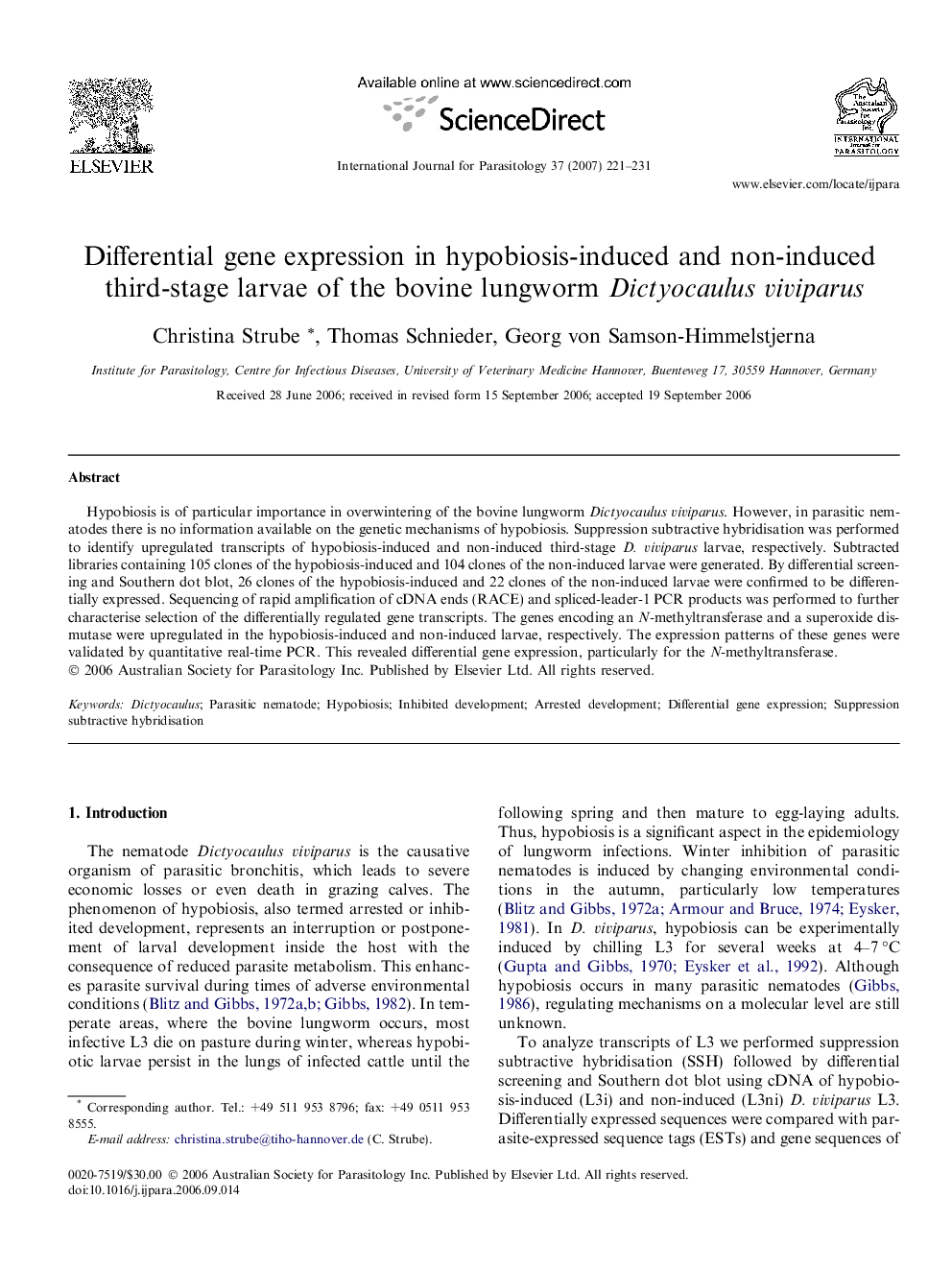| Article ID | Journal | Published Year | Pages | File Type |
|---|---|---|---|---|
| 10972807 | International Journal for Parasitology | 2007 | 11 Pages |
Abstract
Hypobiosis is of particular importance in overwintering of the bovine lungworm Dictyocaulus viviparus. However, in parasitic nematodes there is no information available on the genetic mechanisms of hypobiosis. Suppression subtractive hybridisation was performed to identify upregulated transcripts of hypobiosis-induced and non-induced third-stage D. viviparus larvae, respectively. Subtracted libraries containing 105 clones of the hypobiosis-induced and 104 clones of the non-induced larvae were generated. By differential screening and Southern dot blot, 26 clones of the hypobiosis-induced and 22 clones of the non-induced larvae were confirmed to be differentially expressed. Sequencing of rapid amplification of cDNA ends (RACE) and spliced-leader-1 PCR products was performed to further characterise selection of the differentially regulated gene transcripts. The genes encoding an N-methyltransferase and a superoxide dismutase were upregulated in the hypobiosis-induced and non-induced larvae, respectively. The expression patterns of these genes were validated by quantitative real-time PCR. This revealed differential gene expression, particularly for the N-methyltransferase.
Keywords
Related Topics
Life Sciences
Immunology and Microbiology
Parasitology
Authors
Christina Strube, Thomas Schnieder, Georg von Samson-Himmelstjerna,
